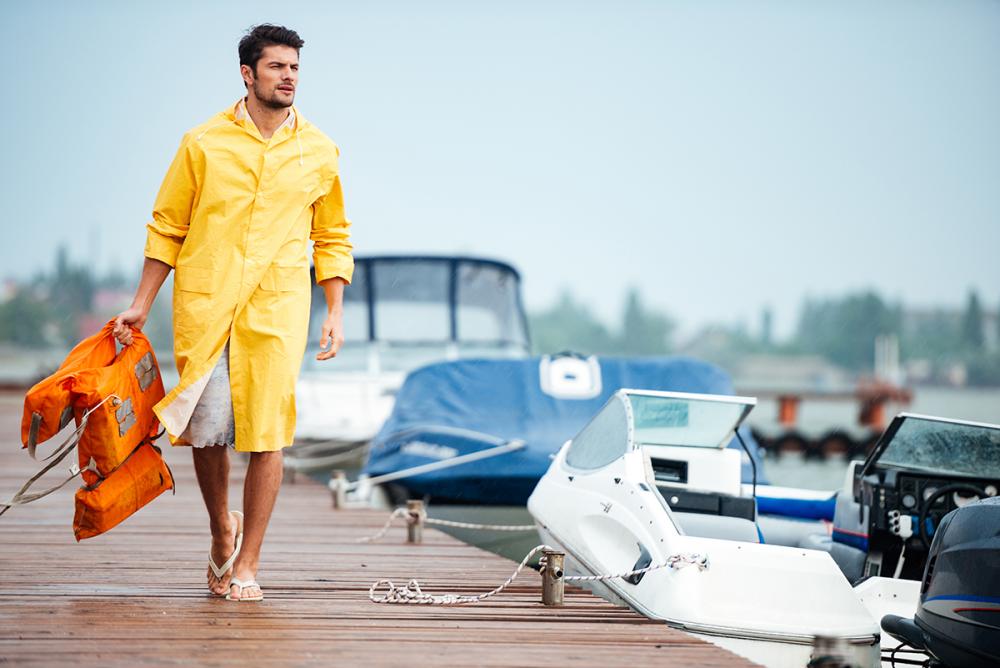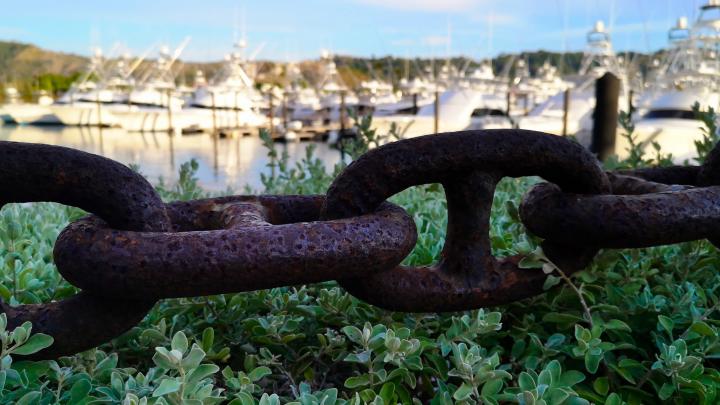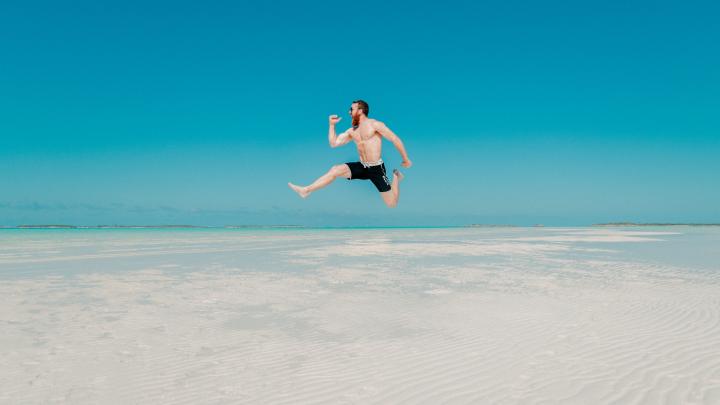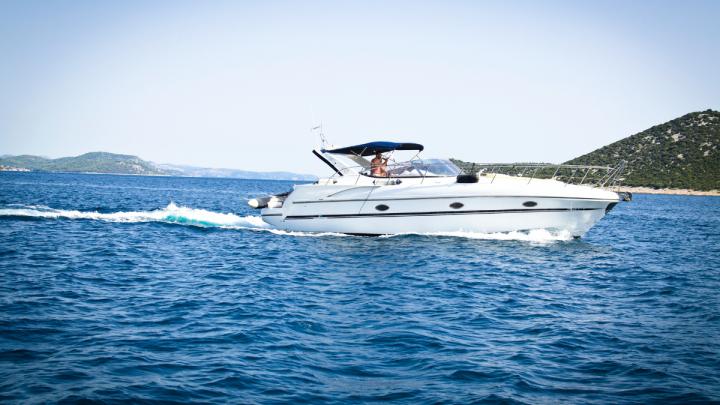Essential Boating Safety Tips for Sailing Alone
Posted Jun 24 2021 in Boating tips
Planning to hoist the sails alone for the first time? This is a must-read for every newbie in sailing!
Ready to take your seamanship to the next level? Then you need to make sure you are always safe and sound when out in the open water! Whether you are a boating enthusiast who loves venturing out on your own or you simply want to be prepared for unexpected situations at any time - a boating safety regimen is a must.
With that in mind, this article is just the boat guide you need! Keep on reading to discover top-notch boating safety tips applicable to both beginner and expert sailors.
Why is Safety a Top Priority When Boating Alone?
Sometimes we all feel the need to escape the rush of urban life and enjoy the peace and solace only nature could provide. And that’s exactly what boating does. It takes you far away from daily struggles, it allows you to clear your head sailing along the calming waves, feeling the refreshing salty breeze on your face.
But like everything else, there is still the opportunity for mishappenings. There might be unexpected weather occurrences, technical difficulties, accidents, and other risks when you go boating alone. Thus, when you get into a challenging situation it is vital to be able to react properly and take relevant preventive measures in advance and on-site.
If you like to hang around on a small sailboat or pontoon, then you can get drifted away if a strong wind or hurricane hits you while away from the shore. It is also not uncommon to experience engine issues, slight technical troubles, and disruptions of the radio signal. There is also the possibility to fall overboard without a lifejacket on, or even find yourself in need of urgent medical attention.
One can never be too sure all will run smoothly, especially when it comes to the unpredictability of the ocean and the climate. So if you like to sail alone, you better embrace both sides of solo boating - an adventure and a possibility to clash with danger.

A Solo Sailor’s Guide & Boating Safety Tips
Without further ado, let’s get right into what you are here for! And that is to learn how to be prepared for trouble. We have gathered applicable expert advice to awake the great captain in you, who is ready to take on the world.
Here are sail.me’s top boating safety tips and precautions to prepare you for your next solo adventure:
Life Jacket
The first rule of sailing is never to head offshore without a life jacket on board. This is an essential boating safety gear that is a lifesaver when you get in trouble and find yourself overboard. It allows you to keep afloat and increases your chances of survival if your boat drifts away or you are injured and unable to go back on it.
When you know there are no crew members to lend you a hand if things get rough, you need to evaluate the risks and think ahead. Wear the lifesaving gear at all times. Even if you feel completely secure on your boat, having a life jacket on for the whole duration of your trip is one of the best boating safety tips we can provide.
If you think that a classic life jacket can restrict your movements or undermind your experience, then consider alternatives. Feel free to invest in an auto inflatable suspender jacket that will not interfere with your basic boating tasks and you can wear over your clothes. At the end of the day, it keeps you safe as it has a hydrostatic mechanism and inflates instantly when you fall into the water.
Kill Switch
Fans of high-speed and motorboats should be ready to perform a safety stop at all times. So if you like to go on solo adrenaline rush trips with your fast boat - you need a kill switch. A kill switch is a safety stop lanyard device that allows you to cut the engine off if you ever find yourself overboard.
By performing an engine cutoff, you can protect yourself from danger, trauma, and even losing your boat. The beneficial portable devices are clipped to the body so when you lose control over the speedboat, it stops. There are also a few wireless kill switch solutions on the market.
To perform boating activities or leave your boat in an idling state, you can unclip the safety stop lanyard and go do your chores without cutting the engine off. Then when you are ready to go again, simply attach the device to yourself and enjoy a safe boating journey.
Waterproof devices (GPS Locator & VHF)
A waterproof personal locator beacon is a compact must-have gadget for boating safety since it can allocate you with high precision. Having a GPS locator at all times will guarantee you get rescue on time in case of danger or emergency. Solutions such as waterproof smartphones and smartwatches can also be a lifesaver if you need to send a signal out.
Yet, we would advise you not to put all your faith in modern tech because often you will find yourself off the grid and out of service. Additionally, in case of mishaps, mobile devices can be severely damaged.
With that in mind, sail.me would advise you to get a personal locator and VHF, as well. Personal locators (PLB) are satellite communication devices that emit strong signals when you need to contact a mayday rescue team. A huge note - make sure your GPS beacon is registered with your local coastal authorities to work properly for boating safety.
Always attach the GPS beacon and a digital selective calling device (DSC VHF) to your gear or belt when you are out, boating alone. It will not get in your way and at the same time, will assure you can be located and contacted offshore.
Reboarding Strategy
One of the most important seamanship and boat safety skills is to learn how to reboard without crewmate assistance. Let’s be honest, every sailor and boating enthusiast has fallen or jumped overboard one way or another (accident, training, for fun, etc). Yet, there is a huge difference between reboarding when friends help out, and when you battle it out with balance, waves, and currents on your own.
Indeed getting back on a boat is a challenging task without any external help. So if you find yourself alone in the ocean, make sure your boat has the means for successful reboarding. The basic reboarding features include ropes, hanging floaters and belts, built-in ladder or folding steps.
When it comes to boating safety tips, having your vessel adjusted for water level reboarding is a requirement like no other. It helps you save yourself in case of an accidental fall, sudden weather change, or other unfortunate circumstances.
You might also like
 Transporting a Boat to Costa Rica: All You Need to Know
Transporting a Boat to Costa Rica: All You Need to KnowSep 14 2023Boating tips
U.S. Department of State statistics show that tens of thousands of American and Canadian expats and retirees have chosen to move to Costa Rica, and it’s not hard to see why. From the paradise beaches to the sunny weather, there’s a lot to love about this part of the world, and having your own boat there is a great way to make the most of the experience.
read full post Bear Cut Sandbar - A Hidden Gem for Boaters
Bear Cut Sandbar - A Hidden Gem for BoatersFeb 06 2023Boating tips
If you're a boater in search of a hidden paradise, Bear Cut Sandbar is the place for you. This stunningly beautiful location is located just off the coast of Key Biscayne, Florida, and is the perfect destination for boaters looking for a relaxing day in the sun.
read full post How To Keep Miami's Blue Waters While Boating Green
How To Keep Miami's Blue Waters While Boating GreenJan 05 2023Boating tips
As boaters in Miami, we have the privilege of enjoying the beautiful blue waters of the city. However, it is our responsibility to ensure that we are doing our part to keep these waters clean and healthy for all to enjoy.
read full post